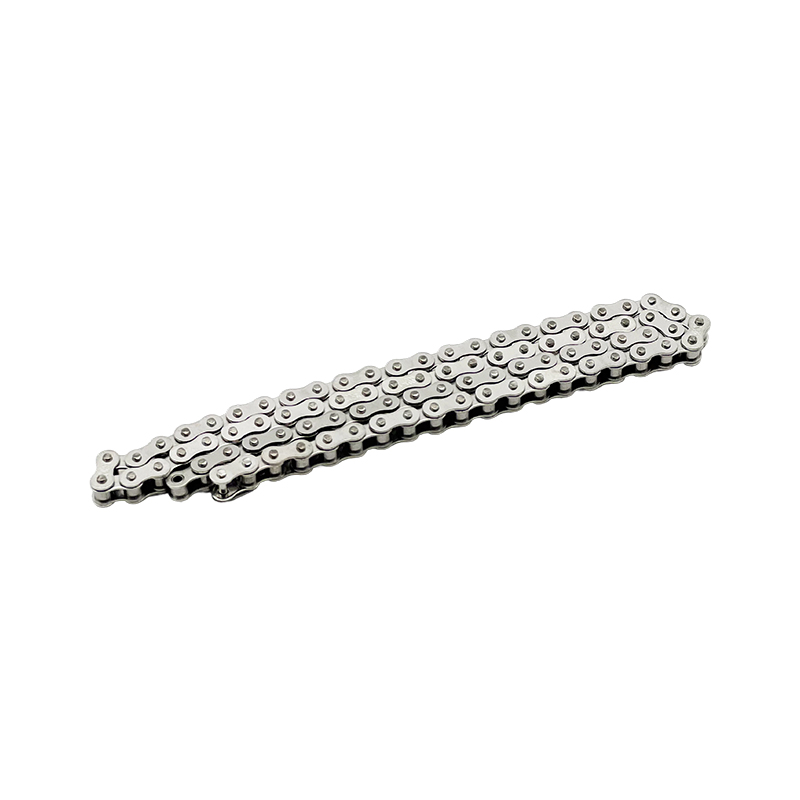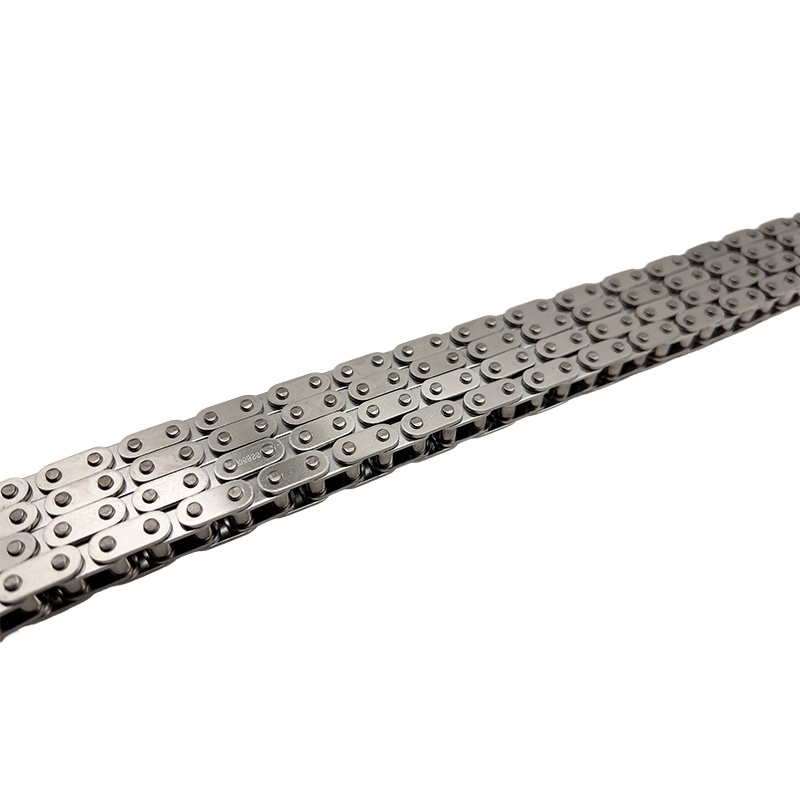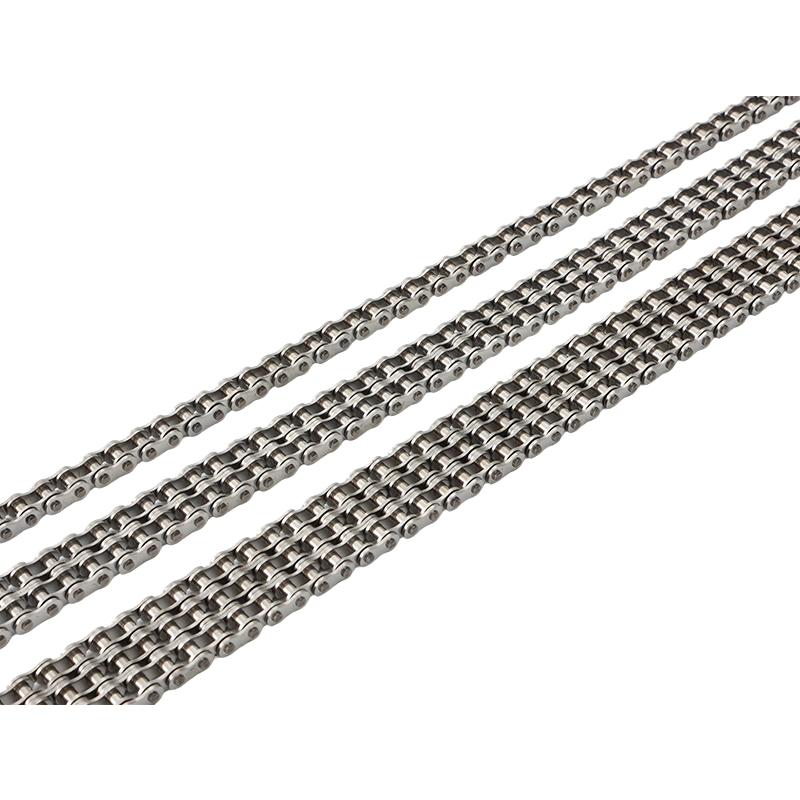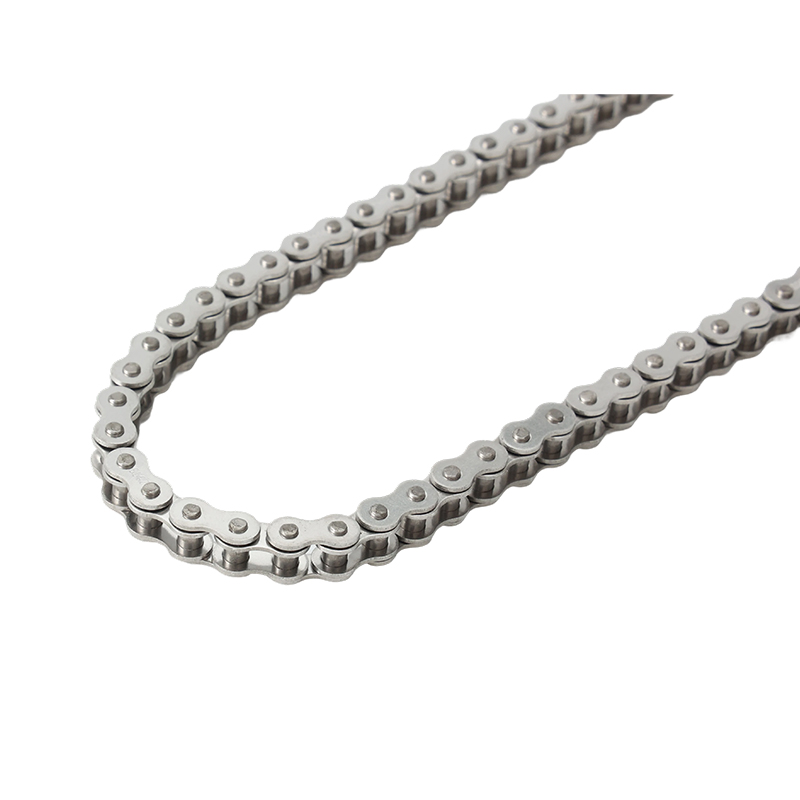What effect does the installation tightness of a stainless steel 304 transmission chain have on its service life and transmission accuracy?
Release Time : 2025-05-28
The installation tightness of the stainless steel 304 transmission chain is a key factor in determining its performance. Too tight or too loose will have an adverse effect on the service life and transmission accuracy, and it needs to be precisely controlled during the installation process.
When the chain is installed too tight, the entire transmission system will be subjected to additional stress. The meshing pressure between the chain and the sprocket increases, causing the friction between the chain links, rollers and sprocket tooth surfaces to increase significantly. This continuous high-load operation will accelerate the wear of the chain components, especially the hinged parts of the chain links, which are more prone to metal fatigue and deformation. If the chain is in an overtight state for a long time, the metal structure inside the chain will gradually suffer microscopic damage, causing the chain to elongate and break prematurely, greatly shortening its service life. At the same time, an overtight chain will also increase the load on the equipment drive motor, causing energy waste, and may even cause failures due to motor overload.
In terms of transmission accuracy, an overtight chain will increase the resistance during the transmission process, resulting in poor smoothness of the chain operation. Due to the uneven friction between the chain and the sprocket, jamming may occur during the transmission process, making the equipment running speed unstable. For some equipment with high transmission accuracy requirements, such as precision machine tools and automated production lines, this jam will directly affect the accuracy and quality of the processed products, leading to dimensional deviations, unqualified surface roughness and other problems, seriously affecting production efficiency and product qualification rate.
In contrast, there are also many hidden dangers when the chain is installed too loosely. A too loose chain will produce a large sag during operation. When the equipment starts or the load changes, the chain is prone to jumping and shaking. This unstable operating state will cause the chain to engage with the sprocket inaccurately, resulting in the chain being de-toothed and skipping on the sprocket. Frequent skipping will not only aggravate the wear of the chain and sprocket, but also destroy the stability of the entire transmission system and reduce the transmission efficiency. Moreover, a too loose chain may collide with other parts of the equipment during the shaking process, causing damage to the chain surface and further shortening its service life.
From the perspective of transmission accuracy, a too loose chain cannot guarantee a stable transmission ratio. Due to the sag changes and jumping of the chain, the output speed of the equipment will fluctuate, making it difficult to achieve precise motion control. In some equipment that requires precise synchronous operation, such as multi-axis linkage machinery, printing machinery, etc., a loose chain will lead to uncoordinated movement between various components, affect the overall performance of the equipment, and even cause production accidents. In addition, a loose chain will also produce a large operating noise, affecting the working environment.
Appropriate installation tightness can make the stainless steel 304 transmission chain work in an ideal state. Appropriate tightness can keep the chain and the sprocket in a good meshing state, which can not only ensure sufficient transmission tension, but also reduce unnecessary friction and wear. In this state, the chain runs smoothly, the transmission efficiency is high, and the service life can be effectively extended. At the same time, the appropriate tightness can also ensure the accuracy of the transmission system, make the equipment run stably and reliably, and meet the use requirements under various working conditions.
In order to achieve the appropriate tightness, the correct methods and tools need to be used during the installation process. The installer should accurately adjust the tightness of the chain according to the instruction manual of the equipment and the specification requirements of the chain. Usually, the tightness can be judged by measuring the sag of the chain and observing the running status of the chain. In addition, after the equipment has been running for a period of time, the tightness of the chain needs to be reviewed and adjusted, because the chain will stretch due to wear and other reasons during use, and needs to be adjusted in time to maintain the best condition.
The installation tightness of the stainless steel 304 transmission chain has a direct and important impact on its service life and transmission accuracy. Whether it is too tight or too loose, it will cause many problems to the chain and equipment. Only by strictly controlling the installation tightness and ensuring that the chain is in a suitable tension state can the performance advantages of the stainless steel 304 transmission chain be fully utilized, the reliability and stability of the equipment can be improved, the maintenance cost can be reduced, and the smooth production can be guaranteed.







